Simulation of Exhaust Duct
PROBLEM STATEMENT:
The reduction of engine specific fuel consumption (SFC) is a major impetus in the development of aero-engines and the aerodynamic performance of the exhaust system is fundamental to this drive. A lot of heat energy is lost through the exhaust duct in the form of radiations which leads in decreased efficiency of the engine. To compensate the loss SFC of the engine increases.
TECHNOLOGY USED
We used CATIA to design and modify the geometry
of the exhaust duct by taking the parameters from different research
generals and various books.
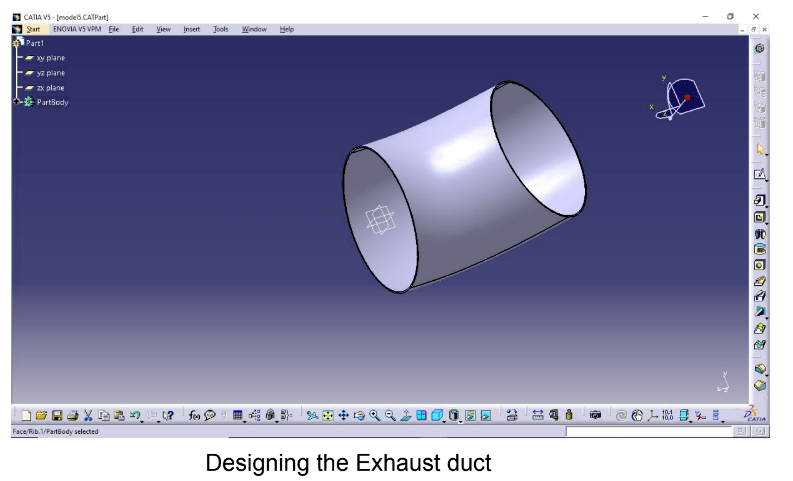
Thermal analysis of the duct was done using the ANSYS.
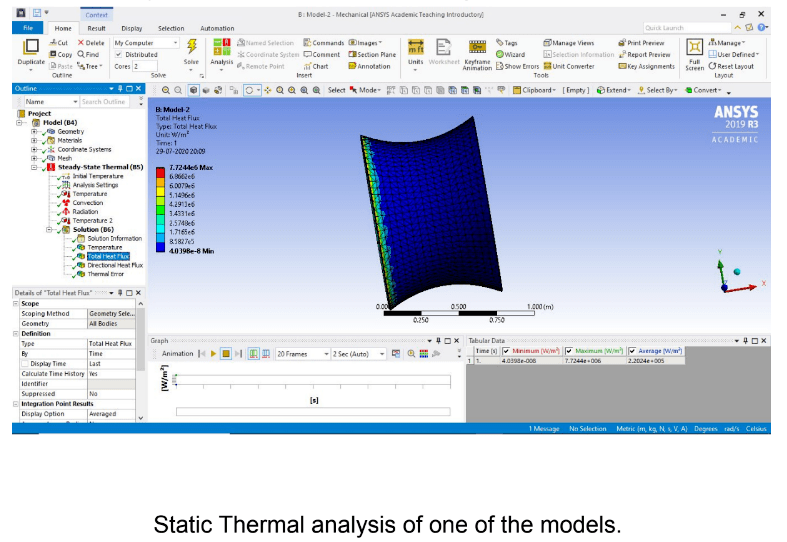
METHODOLOGY
We started by designing a few exhaust ducts by taking
parameters from different research papers. One of the models designed
is shown in the figure below.
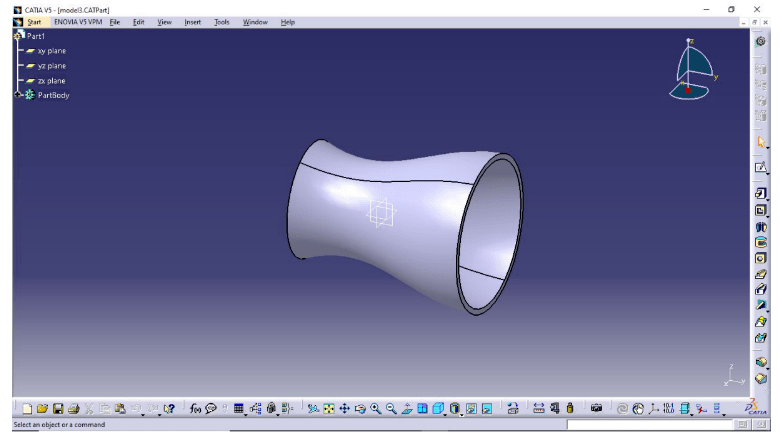
We analysed all the ducts in Ansys using static thermal analysis. The
following parameters were used for the analysis:
1. Inlet temperature: 800 C
2. Outlet temperature: 300 C
3. Heat flow: 1000W at the cross-section of inlet.
4. Internal heat generation: 1000W
5. Film Coefficient:2500 W/(m^2 .K)
6. Radiation emissivity is 0.8W/(cm^2.micron)
7. Ambient Temp. :550 C
We got the following result of the analysis:-
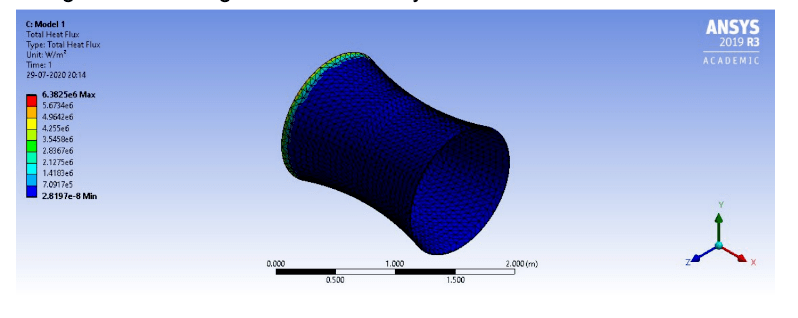
After going through the results we modified the initial geometry by
adding holes near the outlet of the duct which resulted in the following
geometry.
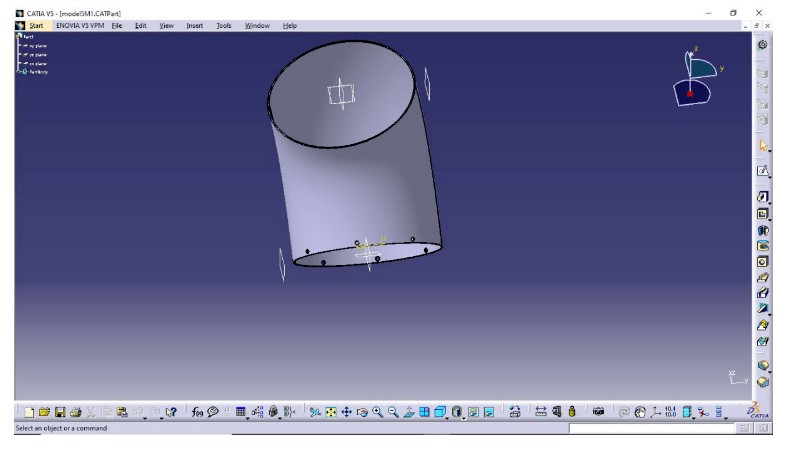
We again performed the analysis using the same parameters and got
the following result:-
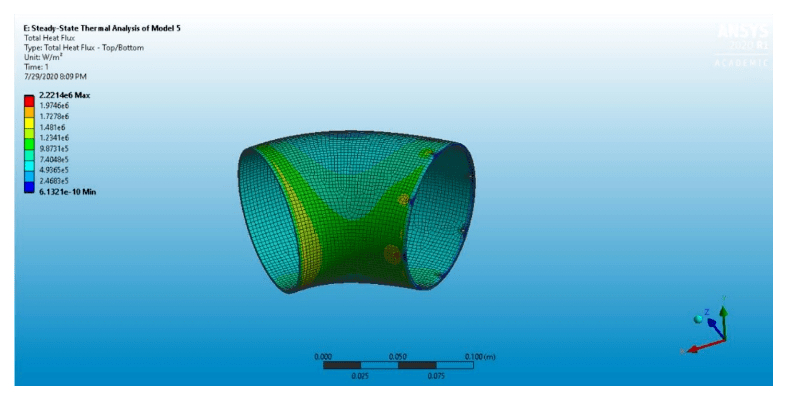
RESULTS
The heat distribution pattern is almost uniform now which will
result in fewer heat radiations. This will reduce the SFC of the engine
CONCLUSION
By modifying the design and adding holes near the outlet of the duct we observe that the pattern of heat distribution is almost uniform.
FUTURE WORK
Try to minimise the radiation by using different materials for making the exhaust duct. Optimising the exhaust duct by means of the CFD technique, which deals with various types of heat and fluid flow problems.
REFERENCES
1. Ansys Icem Cfd 12.0, User Guide, http://www.ansys.com, 2009.
2. Frick, C. W., Davis, W. F., Randall, M. R., Mossman, E. A., An
Experimental Investigation of NACA Submerged-Duct Entrances,
NACA-ACR-5I20, 1945.
3. Stalewski, W., Parametric Modelling of Aerodynamic Objects – The
Key to Successful Design and Optimisation, Proceedings of CEAS,
The International Conference of the European Aerospace
Societies, Venice, Italy 2011
TEAM
● Shefin S - shefinshareef99@gmail.com
● Meghana R - maggy1399@gmail.com
● Sashi Sekharan - sasi.181me124@nitk.edu.in
● Abhinav Raj - abhinavraj.181me102@nitk.edu.in